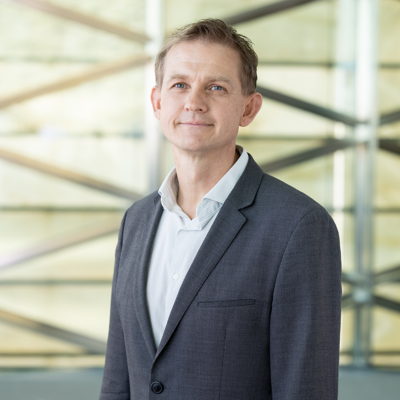
Christian Froekjaer Jensen
Associate Professor, Bioscience
Biological and Environmental Science and Engineering Division
We develop synthetic biology approaches in C. elegans to understand fundamental biology and engineer novel functions into a multicellular organism.
Program Affiliations
Biography
Professor Christian Frøkjær-Jensen is an Associate Professor of Bioscience at KAUST, where he has been a faculty member since 2017. Prior to KAUST, he was a visiting instructor at Stanford University, U.S., working with Professor Andrew Fire, and he was a postdoctoral researcher at the University of Utah, U.S., with Howard Hughs Medical Institute Investigator Professor Erik M. Jorgensen. Dr. Frøkjær-Jensen earned his Ph.D. in Biomedical Science from the University of Copenhagen in Denmark, an M.Sc. in Neuroscience from the University of Oregon, U.S., and an M.Sc. in Biophysics from the University of Copenhagen. His research focuses on genome engineering, gene regulation, and synthetic biology in C. elegans. His lab has made significant contributions to developing broadly adopted genetic tools and methodologies.
Research Interests
Professor Frøkjær-Jensen's research is centered on understanding genome organization and epigenetic gene regulation, primarily utilizing the nematode C. elegans as a model system. His lab explores how noncoding DNA elements, such as Periodic A/T Clusters (PATCs), protect genes from epigenetic silencing, and investigates gene features that permit expression from normally repressive chromatin environments. A major focus is the development and application of high-throughput genome editing technologies, including CRISPR/Cas9 and transposon-based systems, to enable genome-scale manipulations. His group has also worked on reprogramming small RNA pathways, like the piRNA pathway, for precise and transgenerational gene silencing, and has defined engineering rules for robust transgene expression and explored non-Mendelian inheritance patterns. The overarching goal of his group is to apply principles of synthetic biology and biological engineering to dissect fundamental biological mechanisms and build novel genetic systems from first principles.
Education Profile
Research Fellow, Stanford University, 2017
Postdoctoral Fellow, University of Utah, 2014
Ph.D., Health Sciences, University of Copenhagen, 2008
MSc, Neuroscience, University of Oregon, 2004
MSc, Biophysics, University of Copenhagen, 2002

